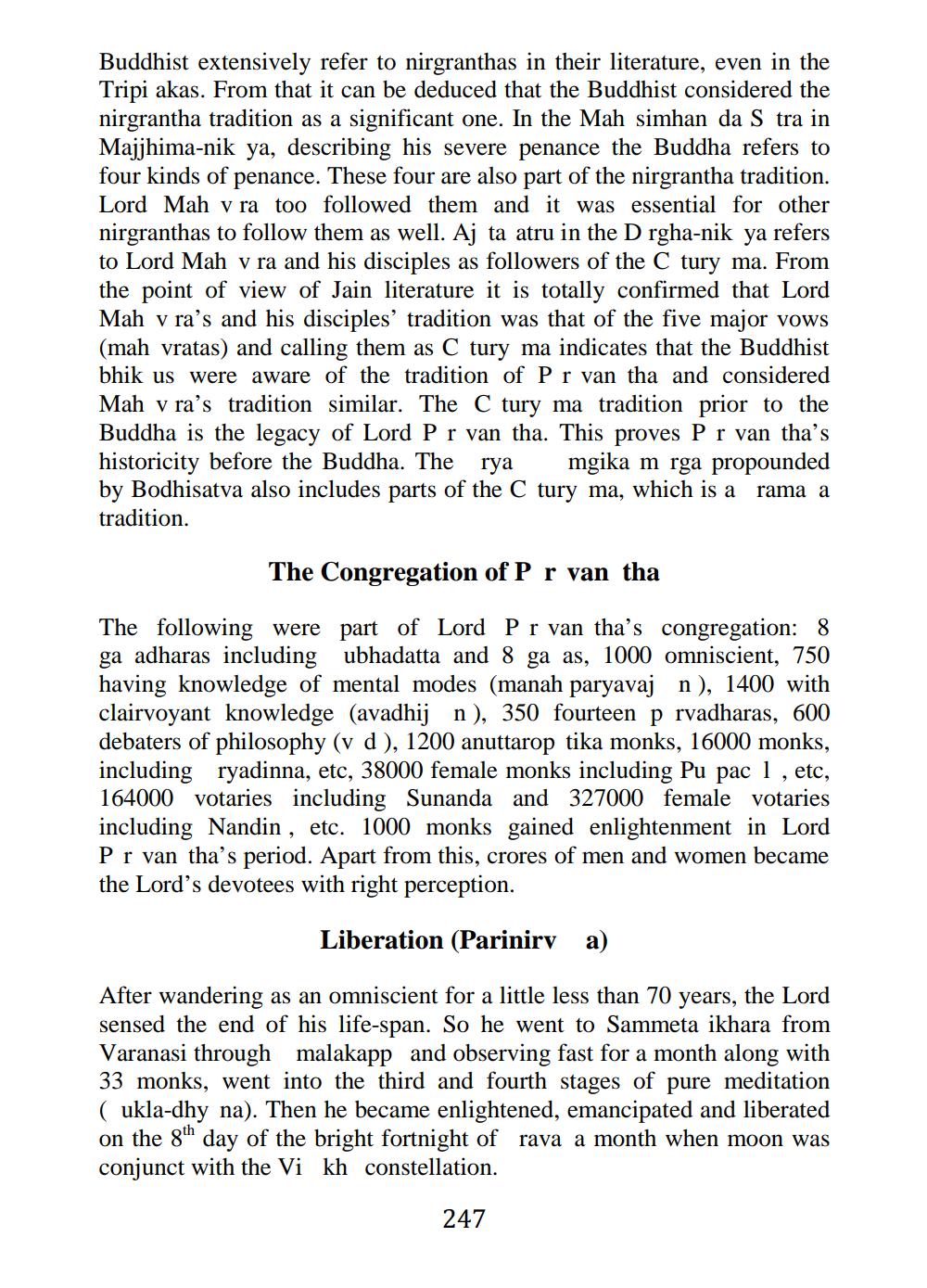________________
Buddhist extensively refer to nirgranthas in their literature, even in the Tripi akas. From that it can be deduced that the Buddhist considered the nirgrantha tradition as a significant one. In the Mah simhan da S tra in Majjhima-nik ya, describing his severe penance the Buddha refers to four kinds of penance. These four are also part of the nirgrantha tradition. Lord Mah v ra too followed them and it was essential for other nirgranthas to follow them as well. Aj ta atru in the D rgha-nik ya refers to Lord Mah v ra and his disciples as followers of the C tury ma. From the point of view of Jain literature it is totally confirmed that Lord Mah v ra's and his disciples tradition was that of the five major vows (mah vratas) and calling them as C tury ma indicates that the Buddhist bhik us were aware of the tradition of Pr van tha and considered Mah v ra's tradition similar. The C tury ma tradition prior to the Buddha is the legacy of Lord P r van tha. This proves P r van tha's historicity before the Buddha. The rya mgika m rga propounded by Bodhisatva also includes parts of the C tury ma, which is a rama a tradition.
The Congregation of P r van tha
The following were part of Lord P r van tha's congregation: 8 ga adharas including ubhadatta and 8 ga as, 1000 omniscient, 750 having knowledge of mental modes (manah paryavaj n), 1400 with clairvoyant knowledge (avadhij n), 350 fourteen p rvadharas, 600 debaters of philosophy (v d), 1200 anuttarop tika monks, 16000 monks, including ryadinna, etc, 38000 female monks including Pu pac 1 , etc, 164000 votaries including Sunanda and 327000 female votaries including Nandin , etc. 1000 monks gained enlightenment in Lord Pr van tha's period. Apart from this, crores of men and women became the Lord's devotees with right perception.
Liberation (Parinirva)
After wandering as an omniscient for a little less than 70 years, the Lord sensed the end of his life-span. So he went to Sammeta ikhara from Varanasi through malakapp and observing fast for a month along with 33 monks, went into the third and fourth stages of pure meditation ( ukla-dhy na). Then he became enlightened, emancipated and liberated on the 8th day of the bright fortnight of rava a month when moon was conjunct with the Vi kh constellation.
247




